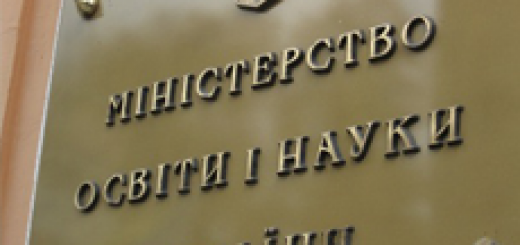 On March 14, 2016, the Kyiv School of Economics held a discussion on reforming the system of financing higher education in Ukraine, at which First Deputy Minister of Education and Science Inna Sovsun presented a draft of a new financing mechanism for higher education.
On March 14, 2016, the Kyiv School of Economics held a discussion on reforming the system of financing higher education in Ukraine, at which First Deputy Minister of Education and Science Inna Sovsun presented a draft of a new financing mechanism for higher education.
Inna Sovsun noted that today the issue of financing higher education needs drastic changes. The state procurement system is outdated and does not rely on objective data and scientific methods, and also gives reason to accuse state customers of "manual distribution". In the conditions of a market economy, when private companies make up the majority of the labor market, state procurement does not meet the demands of society and the needs of the labor market.
In addition, the state order cannot be a tool for stimulating the development of universities, because it is tied to the number of students, and therefore to the number of teachers' rates. Over the past 25 years, contrary to demographic trends, when the number of graduates is decreasing, the country has seen an increase in the number of universities and students. Today, up to 80 % graduates enter universities. On the one hand, this state of affairs helps to increase the level of coverage of higher education, on the other hand, it reduces its quality.
"It is necessary to abandon the term "state order" and talk about the financing of higher education institutions. It is not about ending state funding, but about creating a new clear model," the first deputy minister emphasized.
As the First Deputy Minister reported, the model of financing higher education proposed by the Ministry of Education and Culture consists of four elements. The first key element is basic (block) financing of higher education institutions. The second is the social fund. The third is the development fund (capital expenditure fund). The fourth is the state targeted support fund, where money will be invested to support those categories of the population to whom the state provides additional support for obtaining higher education.
According to basic or block funding, the higher education institution will receive 80 % of guaranteed funding from last year's funds. This will enable the university to plan its work for the coming year. The remaining 20 % funding will be distributed according to the performance indicators of higher education institutions. Today, based on these indicators, it is proposed to take into account the number of students who have chosen a particular university. At the same time, it is important to pay attention to the financing of the student depending on his chosen specialty. Engineering specialties should receive more funding, because they require the use of laboratories and additional equipment. Among other indicators of the effectiveness of the university's work, the first deputy minister named scientific publications, scientific research activities of the institution, the level of internationalization, indicators of employment of graduates, attraction of other sources of funding for scientific research.
 As Inna Sovsun explained, the social fund will make it possible to separate the financing of work. It is also necessary to separate academic scholarships - based on the results of students' studies - from social scholarships. "The state allocated 30-40 % from the total expenditure on higher education for scholarships in different years. Today, these expenses amount to almost 6 billion hryvnias. Of course, 60 % students cannot have the best success rates," the First Deputy Minister noted.
As Inna Sovsun explained, the social fund will make it possible to separate the financing of work. It is also necessary to separate academic scholarships - based on the results of students' studies - from social scholarships. "The state allocated 30-40 % from the total expenditure on higher education for scholarships in different years. Today, these expenses amount to almost 6 billion hryvnias. Of course, 60 % students cannot have the best success rates," the First Deputy Minister noted.
The task of the fourth element of the new financing model - the development (capital expenditure) fund - is to direct funds to university development projects or to its capital investments. Private higher education institutions can also receive state funding for students from among the best applicants, if they have expressed a desire to study at a private institution.




